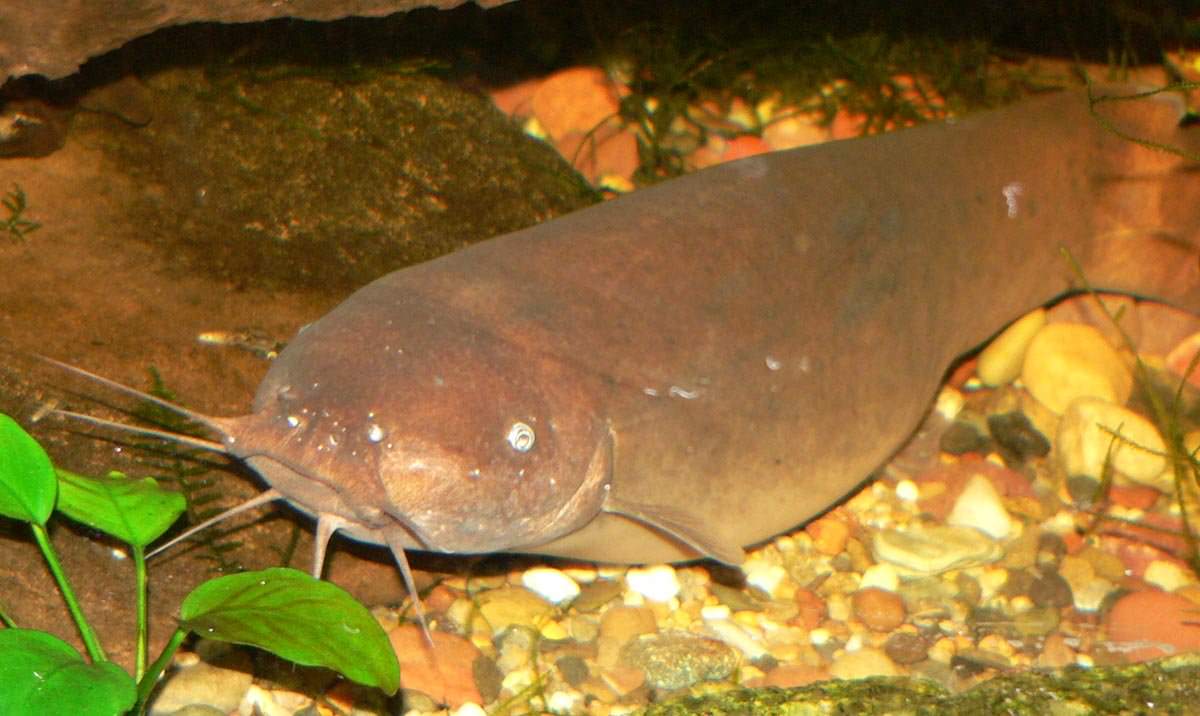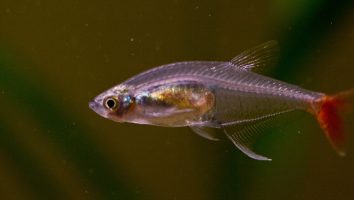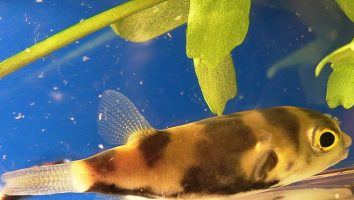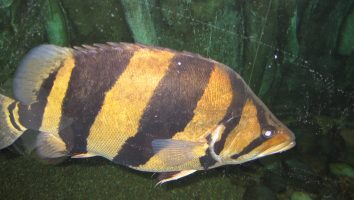The electric catfish is a freshwater fish that is known for its distinctive appearance and interesting behavior.
This guide will teach you everything you need to know about electric catfish care. You’ll learn about their diet, size, lifespan, and more!
Table of contents
Species overview
Electric catfish (scientific name: Malapterurus electricus) are found throughout a large majority of Africa.
They prefer murky waters with a lot of hiding places and not much in the way of currents. Electric catfish are known to be relatively aggressive, so they should be kept with care.
In the wild, these fish eat other fish, crustaceans, and insects. They are opportunistic feeders and will likely eat anything they can fit in their mouths.
Electric catfish are popular in the aquarium trade because of their unique appearance and interestingElectric catfish (scientific name: Malapterurus electricus) are found throughout a large majority of Africa.
They prefer murky waters with a lot of hiding places and not much in the way of currents. Electric catfish are known to be relatively aggressive, so they should be kept with care.
In the wild, these fish eat other fish, crustaceans, and insects. They are opportunistic feeders and will likely eat anything they can fit in their mouths.
Electric catfish are popular in the aquarium trade because of their unique appearance and interesting behavior. They are also known to be relatively hardy, which is always a bonus when it comes to keeping fish.
Appearance

The Electric catfish is one of those fish that is immediately recognizable. They have a very unique appearance that is unlike any other fish out there.
The body of the Electric catfish is long and eel-like. They have a very thin build that tapers down at the end.
The Electric catfish has a dorsal fin that runs the entire length of their body. This fin is very thin and not very noticeable.
Their pectoral fins are also very long and thin. These fins are located on the sides of their body just behind their head.
The Electric catfish also has a long and thin caudal fin. This fin is forked and extends back quite far.
The Electric catfish gets its name from the fact that it can produce an electric shock. This fish has electric organs that are located on the sides of their body just behind their pectoral fins.
These organs are used for self-defense and to stun prey. The Electric catfish can produce a shock of up to 350 volts!
Lifespan
The lifespan of an electric catfish in captivity is typically around 8 years.
This is a fairly long lifespan for a freshwater fish and is a testament to their hardiness. Of course, there are a number of factors that can impact their life expectancy.
The quality of the water they’re kept in is obviously very important. Electric catfish are very sensitive to water quality and even a slight change can stress them out. This can lead to all sorts of health problems down the line.
Another factor that can impact their lifespan is their diet. Electric catfish are obligate carnivores, which means they need a diet that’s rich in protein. If they don’t get enough protein, they can start to experience a whole host of health problems.
Size
The average size of an Electric Catfish is between 12 and 18 inches, with some specimens reaching lengths of up to 24 inches. These fish are relatively slender, with most adults only reaching a width of about 4 to 6 inches.
Tank
Tank Size
The recommended minimum tank size for electric catfish is 50 gallons. These fish can grow to be quite large, up to 24 inches in some cases, so they need the extra space to swim.
If you’re looking for a smaller freshwater fish that can fit in an average-sized tank, this is not the fish for you.
Water Parameters
The electric catfish is a freshwater fish that is most commonly found in the rivers of Africa. Due to their large size, they are not recommended for the home aquarium.
Electric catfish prefer water that is on the warm side with a pH that is on the alkaline side. They also prefer water that is well-oxygenated with a moderate flow.
- Water temperature: 75 to 86 degrees Fahrenheit
- pH levels: 7.0 to 8.5
- Water hardness: 8 to 30 dGH
- Alkalinity Levels: 4-12 dKH
What To Put In Their Tank
Electric catfish are a species of freshwater fish that are native to Africa. They’re a popular choice for aquariums because of their unique appearance and relatively peaceful nature.
These fish don’t have any specific requirements when it comes to setting up their tank. A standard gravel substrate will work just fine.
As for decorations, it’s really up to you. These fish aren’t picky and will do well with most things. We recommend adding some plants and driftwood to their habitat. This will help provide some hiding places and give the inside of the tank a more natural look.
One important thing to keep in mind is that electric catfish are known to be escape artists. They’re very good at finding weak spots in aquariums and making a break for it.
Make sure that your tank is secure and there aren’t any gaps that these fish can squeeze through. If you’re not sure, it’s always better to err on the side of caution and get a tank that’s a little too big rather than one that’s too small.
Common Diseases
Electric catfish are actually quite hardy fish. They are able to withstand a wide range of water conditions and are not easily affected by disease.
However, that doesn’t mean that they’re immune to illness. If the water conditions in their tank are not up to par, they can fall ill just like any other freshwater fish.
The most common disease that affects electric catfish is ich. This is a parasitic infection that can be quite serious if it’s not treated.
The most obvious symptom of ich is the presence of white spots on the body of the fish. If you notice this, it’s important to act fast and begin treatment immediately.
There are other potential diseases that can affect electric catfish, but they’re not nearly as common. Some other possibilities include infections, parasites, and fungus.
As with any other fish, the best way to prevent these fish from getting sick is to maintain the quality of the water in their tank. A tank with clean and stable water conditions always leads to healthier fish who are more resistant to disease.
Behavior & Temperament
Electric Catfish are not recommended for home aquariums due to their aggressive nature and potential to harm other tank mates. These fish are known to be loners, and they will often attack and eat other fish that they come into contact with.
In the wild, their diet consists mostly of smaller fish, crustaceans, and insects. So, if you do decide to keep one of these fish, make sure that you feed it live food or frozen food that is small enough for it to eat.
As their name suggests, Electric Catfish have the ability to shock other fish and even humans with their electric discharge. This discharge is used as a self-defense mechanism and to stun their prey. The discharge can range from 8 to 350 volts, depending on the size of the fish.
Tank Mates
The electric catfish is a species that is best kept alone or with other electric catfish. This is because they have a tendency to be quite aggressive and will even shock other fish in the tank.
While they are peaceful with their own kind, they can be a bit nippy. It’s best to keep them with other electric catfish that are the same size or larger.
Do not keep them with smaller fish or fish that are not electric catfish.
Breeding
Electric catfish are livebearers, meaning they give birth to live young rather than laying eggs. This makes their breeding process a bit different from other fish.
The first step is to set up a large tank. You’ll need at least 50 gallons, but the bigger the better. Then, add a lot of hiding places. Electric catfish like to have a lot of places to hide, so use driftwood, rocks, and plants.
The next step is to add the electric catfish. You’ll need at least six, but more is better. It’s best to have two females for every male.
Once the electric catfish are in the tank, you’ll need to wait for them to breed. This can take several months.
You’ll know they’re ready to breed when the females start to swell with eggs. This is called gravid. Once gravid, the females will start to look for places to hide. They’ll usually choose a cave or crevice.
The gestation period for electric catfish is around two months. During this time, the female will not eat. After two months, the female will give birth to anywhere from 10 to 100 fry.
The fry are very small and need to be fed live food. Baby brine shrimp is a good option. You can also supplement their diet with crushed-up flake food.
As the fry grow, you can slowly introduce them to larger foods. Eventually, they’ll be able to eat the same food as the adults.
Conclusion
Overall, we think the electric catfish is a great choice for a beginner fish. They’re relatively easy to care for and are very interesting to watch.
Of course, there are some things to be aware of before adding one to your tank. But we think that as long as you do your research and are prepared for their unique needs, you’ll be just fine.
Do you have an electric catfish? Let us know how it’s going in the comments below!












